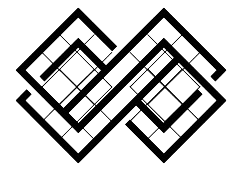Living off-grid offers a rewarding sense of independence, but keeping your home energy-efficient is vital. Proper insulation can significantly reduce energy consumption, making your off-grid lifestyle more sustainable and cost-effective. This guide walks you through eco-friendly and affordable DIY insulation projects that suit off-grid homes, helping you create a comfortable living environment while minimizing energy use.
Why Insulation Matters in Off-Grid Homes
Insulation is a critical component of energy efficiency. By minimizing heat transfer, insulation reduces the need for active heating or cooling systems, which can strain your renewable energy sources like solar panels or wind turbines. Here’s how proper insulation impacts off-grid living:
- Energy Efficiency: Keeps your home warm in winter and cool in summer, reducing energy demand.
- Cost Savings: Lower reliance on energy systems means reduced maintenance and energy costs.
- Comfort: Consistent indoor temperatures make off-grid homes more livable.
- Eco-Friendliness: Insulation reduces carbon emissions by limiting energy waste.
Assessing Your Home’s Insulation Needs
Before starting a project, evaluate your current insulation situation. Focus on key areas where heat transfer is most likely:
- Walls: Check for gaps, thin walls, or missing insulation.
- Roof: Heat rises, making the roof one of the most critical areas to insulate.
- Floors: Uninsulated floors can lose up to 10% of your home’s heat.
- Windows and Doors: Look for drafts or single-pane windows that let heat escape.
Use an infrared thermometer or a thermal imaging camera to pinpoint heat loss areas.
Eco-Friendly Insulation Materials for DIY Projects
Choosing sustainable materials is essential for off-grid living. Here are some excellent options:
- Sheep Wool
- Benefits: Renewable, biodegradable, and moisture-resistant.
- Best Use: Walls and roof insulation.
- Installation Tip: Use batts or loose-fill wool for easy application.
- Cellulose Insulation
- Benefits: Made from recycled paper, cost-effective, and eco-friendly.
- Best Use: Walls and attics.
- Installation Tip: Blow into cavities for maximum coverage.
- Straw Bales
- Benefits: Inexpensive, renewable, and highly insulating.
- Best Use: Walls in new construction or retrofits.
- Installation Tip: Stack tightly and cover with plaster for durability.
- Recycled Denim
- Benefits: Non-toxic, fire-resistant, and easy to handle.
- Best Use: Walls and floors.
- Installation Tip: Cut to fit and staple in place.
- Rigid Foam Boards
- Benefits: Excellent thermal resistance and moisture protection.
- Best Use: Roofs and foundation walls.
- Installation Tip: Seal edges with foam tape to prevent air leaks.
DIY Insulation Projects for Off-Grid Homes
1. Wall Insulation
- Steps:
- Remove drywall or access wall cavities.
- Insert your chosen material (e.g., cellulose, wool).
- Replace drywall and seal edges.
- Tips: Focus on exterior walls for maximum efficiency.
2. Roof Insulation
- Steps:
- Lay rigid foam boards or wool batts between rafters.
- Seal gaps with spray foam.
- Add a vapor barrier for moisture control.
- Tips: Ensure proper ventilation to prevent condensation.
3. Floor Insulation
- Steps:
- Access crawl spaces or underfloor areas.
- Staple reflective foil or place foam boards.
- Seal gaps with weatherproof tape.
- Tips: Use recycled materials for cost-effectiveness.
4. Window Insulation
- Steps:
- Apply window film or bubble wrap to glass.
- Add thermal curtains or blinds.
- Use weatherstripping to seal edges.
- Tips: Upgrade to double-pane windows if possible and use NiceTown’s 100% Blackout Window Curtain Panels – Add to amazon cart
5. Door Insulation
- Steps:
- Install draft stoppers at the base.
- Add weatherstripping around the frame.
- Use insulated door sweeps.
- Tips: Check for gaps after installation using a flashlight.
Maintenance Tips for Long-Term Efficiency
- Regular Inspections
Check for wear, moisture, or pest damage every six months. - Seal Gaps Promptly
Address any cracks or air leaks immediately to maintain efficiency. - Keep Materials Dry
Use vapor barriers or dehumidifiers to prevent mold or water damage. - Upgrade When Needed
Replace worn insulation or invest in higher-quality materials over time.
Cost and Savings Breakdown
Investing in DIY insulation can save thousands over time. Here’s a rough estimate:
- Initial Costs: $500–$2,000, depending on material and home size.
- Annual Savings: Up to 20% on energy costs.
- ROI: Most projects pay for themselves within 2–5 years.
Common Questions
1. Can I insulate an existing home without removing walls?
Yes, materials like cellulose can be blown into existing wall cavities through small drilled holes.
2. What’s the most eco-friendly insulation material?
Sheep wool and cellulose are among the most sustainable options.
3. How do I prevent mold in insulation?
Use moisture-resistant materials and vapor barriers, and ensure proper ventilation.
Share Your DIY Insulation Tips!
Insulating your off-grid home is a journey, and we’d love to hear your insights. What methods or materials have worked best for you? Share your experience in the comments and help the OffiniTech community grow!

